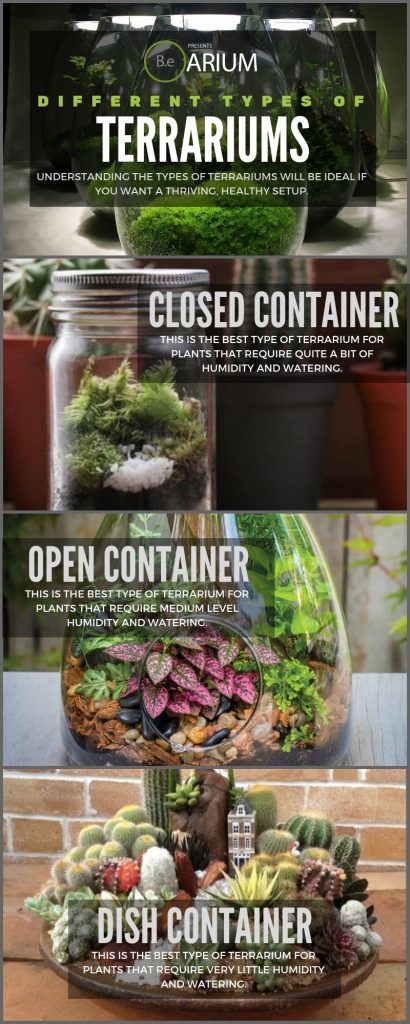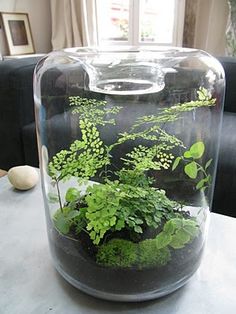Low Care Terrarium Plants for Dummies
Wiki Article
Low Care Terrarium Plants Can Be Fun For Everyone
Table of ContentsMore About Low Care Terrarium PlantsRumored Buzz on Low Care Terrarium PlantsThe 5-Second Trick For Low Care Terrarium PlantsNot known Facts About Low Care Terrarium Plants
The compact and also dwarf cultivars of this varieties are prominent selections for closed terrariums, where they function as striking centerpieces. Fittonias with typical names such as along with and may have deep environment-friendly foliage with bright red or intense pink blood vessels, or their pigmentation might be reversed, such that the fallen leaves are red, pink, or lavender with capillaries of deep eco-friendly.Discover extra regarding nerve plants as well as how to care for them below. are non-vascular plants (i. e., they do not have the customized cells for supplying water and also nutrients that the majority of plants have) as well as they do not expand roots. Due to the fact that of these one-of-a-kind qualities, mosses absorb water mainly via their fallen leaves, which usually include simply a solitary layer of cells.
With such a variety offered, you can even produce a captivating closed terrarium filled exclusively with different types of mosses, which you can set in an area that obtains much less light than would be necessary for many various other kinds of plants. low care terrarium plants. are not actually mosses; yet like mosses, they are moisture-loving plants that function wonderful as closed terrarium plants, specifically as ground cover.

The Of Low Care Terrarium Plants
Recognized by the usual name of, they have distinct black stems and also lacy, bright green leaflets that will turn your enclosed yard into a wonderful fairyland. The is a little fern belonging to this category that grows rather slowly. It is indigenous to the southern USA and exotic areas to the south.An additional popular types of adiantum that often tends to grow in shut terrariums is the Belonging to the exotic Americas as well as West Indies, this fern has fragile brochures with an appealing lacy summary. Be conscious that since it's faster growing, you'll have to stay on top of the trimming of this plant, so it isn't the finest choice if your aim is to create a self-sufficient, really low-maintenance terrarium.
It expands as dense ground cover or as a climbing up vine, having aerial origins that secrete a latex glue that enables the plant to stick to its assistances. The is a climbing or tracking plant that looks much like a small philodendron, with its vining stems and heart-shaped leaves.
More About Low Care Terrarium Plants
Golden pothos are popular houseplants due to the fact that they are understood to be nearly unbreakable, and also as a matter of fact, the biggest worry you are likely to have with this plant in a shut terrarium is keeping it pruned back so it does not become too unruly. While this plant's preferred growing conditions are cozy temperature levels, modest to high moisture, as well as tool indirect lights, gold pothos is an amazingly versatile plant that will certainly endure a range of growing problems.
It has appealing medium to dark eco-friendly fallen leaves with white bands at the margins. You'll intend to watch out for those little plantlets and remove them from the terrarium before they take control of the entire thing. You can constantly plant them in pots and also enhance the remainder of your house or provide them away to friends! Additional reading concerning taking care of crawler plants: I wish you've enjoyed reviewing these 14 plants that are excellent for closed terrariums.
There are many various terrarium to pick from, ranging from very economical and also functional, to rather pricey but magnificent. I have actually utilized the first alternative listed below to develop an actually effective terrarium. The second choice is my dream terrarium to obtain a long time in the future. If you actually wish to go all out with building a closed terrarium, the Bi, Orb Air is amazing.
4 Easy Facts About Low Care Terrarium Plants Shown
Nevertheless, sellers call them either: A closed terrarium An open terrarium Currently, the open terrarium's ludicrous because it's against what a terrarium is. The Latin meaning of the word 'Terrarium" indicates enclosed planet Terra, being Latin for Earth and also arium being adjusted from aquarium for the room part. Suffice to claim, an open terrarium is just a dish.Whatever works. The kind you use will certainly be identified by the kinds of plants you're planting as well as whether they favor great deals of air or high humidity. A closed terrarium, (as linked here in an actual one) is finest for plants that prosper in humid settings, whereas, an open top container is best for succulents as they like air circulation over moisture.
You can see additional resources that on the container wall surfaces. As the condensation rises, it drips back down to sprinkle the plants, so the water is being recycled. The bonus offer right here is you don't need to water the plants as regularly, or if it's truly humid, it'll be self-sufficient as well as water itself.
In regards to just how the plants make use of that community to live, they get all the nutrition needed for photosynthesis (light dependent), watering as well as oxygen. The dampness content will return from the walls of the terrarium to the soil where it'll after that replenish plant roots to maintain it nourished, growing and solid.
Report this wiki page